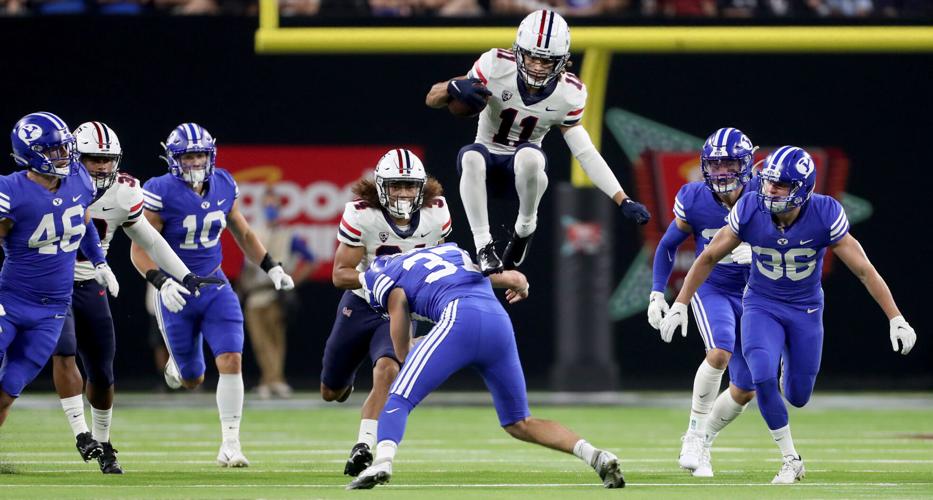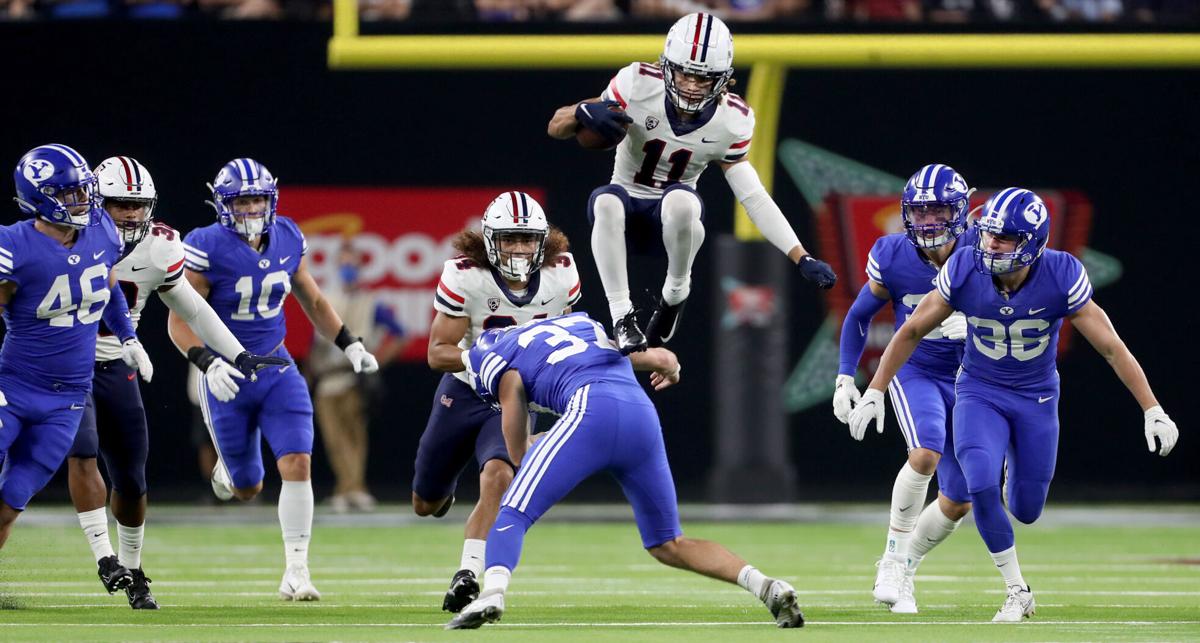Entering last week’s game at USC, Arizona coach Jedd Fisch longed for more long plays. He lamented the Wildcats’ lack of explosiveness on offense. He described their offensive identity as “methodical,” which surely wasn’t something he promised in his cover letter when applying for the UA job.
Arizona ranked near the bottom of FBS in plays of 20-plus yards and 30-plus yards. The Wildcats ranked 11th in the Pac-12 in yards per game and yards per play.
“We need to be able to stretch the field,” Fisch said. “We need to be able to make plays that are bigger than 10-yard gains.”
Against USC, Arizona finally did it. The Wildcats produced an abundance of chunk plays. Unsurprisingly, Arizona established season highs in yards (466) and points (34).
In this week’s Cal/homecoming edition of “Cats Stats,” we’ll take a look at what changed vs. the Trojans, how much of an outlier that game was and where the Wildcats still have room for growth when it comes to generating big plays.

Editor’s note: Each week throughout the football season, we’ll take an in-depth look at the Arizona Wildcats from a statistical perspective.
The biggest change, statistically and anecdotally, could be found in Arizona’s quarterback play. Specifically, the ability of Will Plummer and Jamarye Joiner to connect on passes down the field.
Plummer and Joiner combined to hit on 3 of 7 passes thrown 20 or more yards, according to Pro Football Focus. Entering Saturday, UA quarterbacks had combined to complete only 3 of 24 such passes.
Plummer, who went 2 of 5 vs. USC, had been 2 of 16. Jordan McCloud was 1 of 3 before suffering season-ending leg injuries. Gunner Cruz was 0 of 5 before hurting his thumb.
Joiner’s second pass attempt vs. the Trojans resulted in a 73-yard touchdown to Tayvian Cunningham. The line of scrimmage was the UA 27. Cunningham caught the ball at the USC 30 and sprinted away from the Trojans’ secondary.
That play was Arizona’ longest of the season and just its third of 50 or more yards. The others were Plummer’s 54-yard pass to Cunningham vs. San Diego State and Stevie Rocker Jr.’s 52-yard run vs. Washington.
The Wildcats entered the USC game with only 15 plays of 20-plus yards, per CFBStats.com, and only six plays of 30-plus yards. Both marks ranked 128th in the nation. They had six and four, respectively, against the Trojans.
Arizona averaged 6.6 yards per play against USC, and that was a very big deal. It was easily the Wildcats’ highest mark this season and only the third time they’ve averaged 6.0 or more during their 20-game losing streak. The last time it happened was Nov. 2, 2019, vs. Oregon State (when the UA defense allowed 572 yards and 56 points).
Arizona’s previous high mark this season was 5.3 yards against NAU. The Wildcats averaged less than 5.0 yards per play in five of their first seven games. Their high mark last season, 5.8 yards, also came against USC. They were never lower than 5.9 yards in any of the five games that preceded the losing streak. (Arizona’s record in those games: 4-1.)
While the improved passing attack was the headline from last week’s game, Fisch expressed lingering concern about Arizona’s rushing offense. The Wildcats couldn’t run as much as he wanted to because they were trailing by three touchdowns at halftime. When they did run, they weren’t particularly effective.
Arizona had one rush of 30-plus yards — by linebacker Anthony Pandy on a fake punt. Its next two longest rushes were scrambles by Plummer of 18 and 16 yards. The longest rush by a tailback was 12 yards by Michael Wiley.
Arizona ranks ninth in the Pac-12 at 3.62 yards per rush. (Remarkably, five league teams average less than 4.0 yards per carry.) The Wildcats are tied for 117th in the nation with just five rushes of 20 or more yards, per CFBStats.com.
“We need to really secure up our run blocking,” Fisch said. “I don’t want to just run for 125 or 130 yards a game. (Arizona’s current average is 124.9.) I think we need to be at that 180 mark. And to get to that 180 mark, we have to be able to break a run more than 6 yards and sustain a block.”
The best run by a running back vs. USC, a 20-yard gain by Rocker, was negated by a penalty. Tailbacks Jalen John, Michael Wiley and Drake Anderson combined to gain 69 yards on 18 rushes, a rate of 3.83 yards per carry.
Explosive running plays require sustained blocking from the offensive line, tight ends and wide receivers. Arizona’s top two tight ends, Alex Lines and Bryce Wolma, rank 17th and 20th in run-blocking efficiency in the Pac-12, per PFF. The highest-graded UA wide receiver is BJ Casteel, who ranks 34th among qualifiers. Teammate Boobie Curry is 35th.
Arizona State has the top three run-blocking receivers in the conference and five of the top seven, per PFF. The Sun Devils rank fourth in the league at 191.5 rushing yards per game.
Utah has the top two run-blocking tight ends. The Utes are fifth at 191.3.
If you lift minimum snap counts, Joiner would rank 19th among Pac-12 wideouts in run blocking. His absence because of a knee injury, however long it lasts, will be felt most in the run game. He was instrumental in Rocker’s 52-yard rush vs. Washington as both quarterback (by holding the mesh point) and lead blocker (by hustling downfield).
“We need to do a better job there,” Fisch said of the run blocking as a whole.
It’ll be difficult against Cal, which ranks second in the Pac-12 in run defense (121.9 ypg) and limited the league’s top rushing team, Oregon State, to 134 yards last week.






